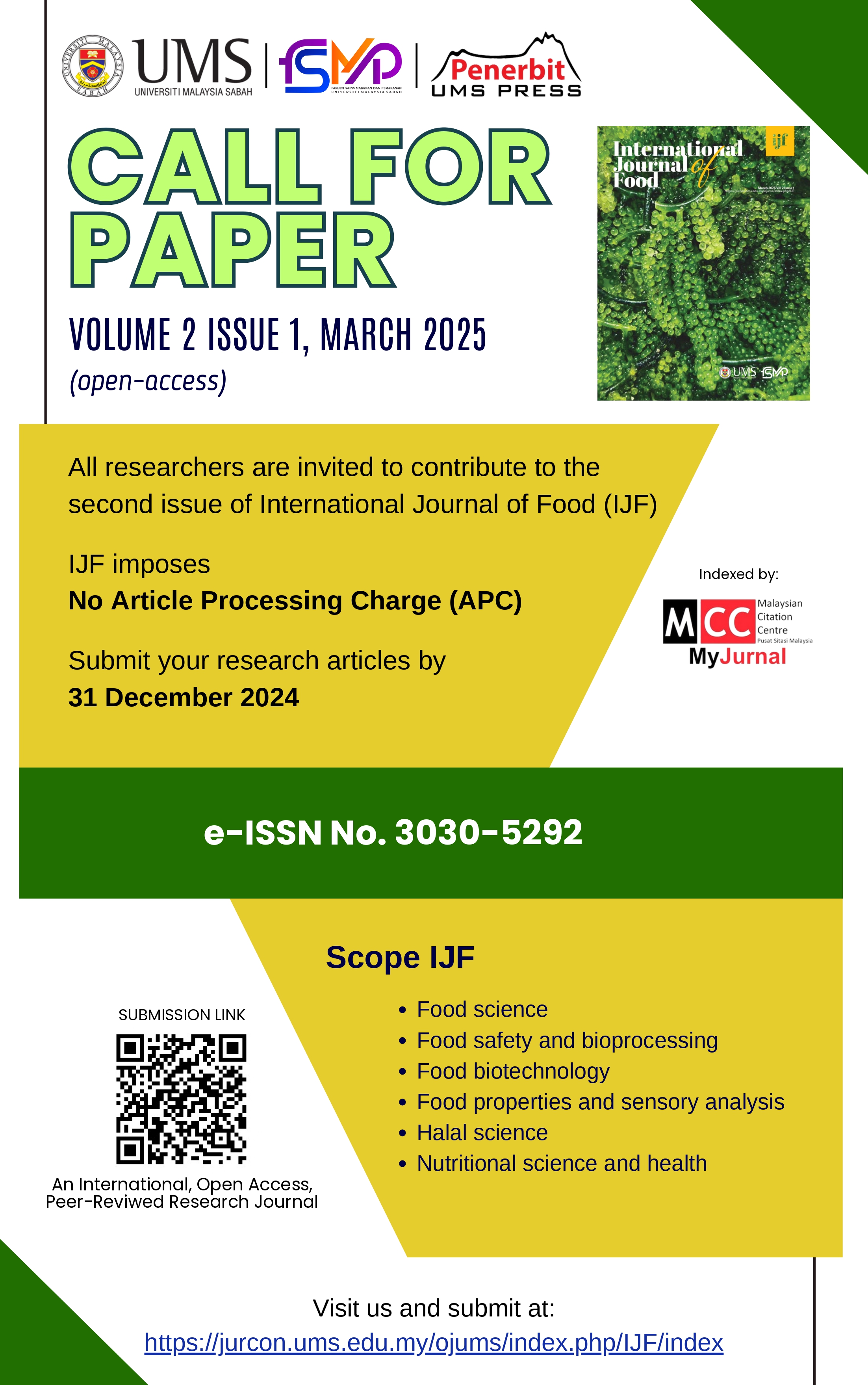Characterisation of silica derived from Bamboo Leaves Ash (Gigantochloa albociliata); preliminary results for moisture content test on rubber wood
DOI:
https://doi.org/10.51200/ijf.v1i1.4765Abstract
Bamboo leaves (Gigantochloa albociliata) constitute substantial amounts of agro-waste from farming and planting activities, offering valuable biomass resources rich in silica. Employing the sol-gel method facilitates silica extraction from bamboo leaves ash (BLA), opening avenues for various applications. Characterisation of the obtained silica involves FTIR analyses providing insights into both chemical and physical properties. FTIR analysis highlights a significant chemical group in SiO2 at 3381.25 cm-1, corresponding to –OH groups of -Si-OH, indicating strong and intense OH-stretching vibrations. This research explores the potential of silica from BLA for practical use. Utilizing silica as a moisture absorbent reveals promising properties. Selection of bamboos as a source of silica is grounded in scientific rationale. Its abundant silica content, inherent in its anatomical structure, offers a readily available and prolific natural source. The rapid growth and sustainability of bamboos further align with eco-friendly practices, showcasing its minimal ecological footprint and swift regeneration compared to alternatives. Opting for bamboo as a silica source not only taps into its mineral richness but also promotes a sustainable and environmentally conscious approach. This strategic choice supports the overarching goal of encouraging green and renewable resources across various industries.










